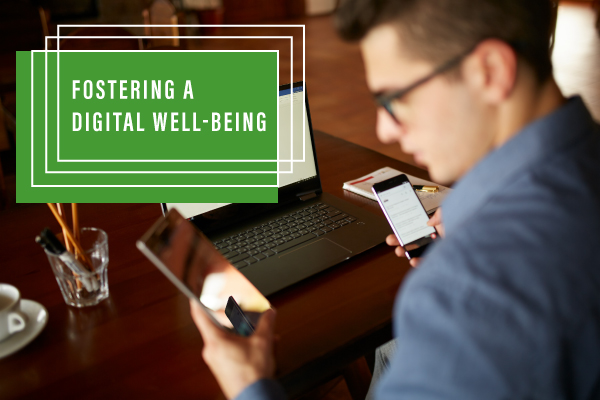
We’re in an era where you can’t go outside without seeing at least one person looking down at their phone as they walk, texting while they wait for the bus or train, or taking a call while they wait in a queue. Your phone contains the capacity to help you in so many dimensions of your life, but it can also be detrimental to your health (Burke, 2019).
The body of research around how much screen time affects mental and physical health has started to grow. There is now an increased importance placed on reducing screen time, as studies show that the overuse of our devices and social media can be linked to depression, sleep problems, and a decline in productivity.
So, how can you manage your screen time and foster digital well-being?
1. Track your screen time
Monitoring how much screen time you’ve clocked and what it’s being spent on could be helpful as many people tend to underestimate the amount of time they spend on their phone. This can be done through your phone settings ““ go to your screen time functions. Some apps, such as Instagram, allow you to track time and disable features once the time limit is up.
2. Switch off your notifications
Our phones are designed to get our attention, so it’s hard to focus when it’s constantly buzzing, flashing, pinging or ringing from notifications. Notifications from social media apps should be disabled, or anything that is going to distract your attention from other things on a regular basis throughout the day (Burke, 2019). You’ll be able to look at your phone when you’re ready and finished with other activities (for example, on your lunch break).
3. Stop taking your phone to bed
According to a study by Harvard Health, the artificial light from our phones and laptops (aka “blue light”) is detrimental to our sleep quality (Burke, 2019). As per Harvard Health, ideally you should avoid screens at least two hours before. Time to break that late night scroll habit!
4. Stop taking your phone to the bathroom
We all know that we end up spending more time in the bathroom when we take our phones with us, compared to when we don’t. Leave your phone outside, or even replace it with a book or magazine.
5. Switch your phone to grayscale
According to Vice, many people are reporting decreased feelings of addiction to their phones once they switch the screen visuals so that it’s in shades of grey, rather than colour (Burke, 2019).
6. Designate screen free areas in your home, with your partner or roommate
Living with someone else makes it easier to stay off your phone, if you both have the same desire to reduce your screen time. Establish certain areas in your home where you both agree to stay off your phone. Do some cooking, gardening, art, or play cards!
Source:
Burke, C., 2019. 9 Ways To Reduce Screen Time & Fight The Urge To Check Your Phone. Bustle. Available at:<https://www.bustle.com/p/9-ways-to-reduce-screen-time-fight-the-urge-to-check-your-phone-18841370> [Accessed 19 November 2020].
Success Starts Now!
Study a nationally accredited and professional online course and get 20% off*. Subscribe to our Newsletter to receive an eVoucher that can be used on top of our monthly promotion.
Whether you are looking to upskill or reskill to improve your career prospects or are looking for an exciting new career opportunity, you will find a course to meet your needs in our extensive online course catalogue.
*Terms & Conditions Apply.




